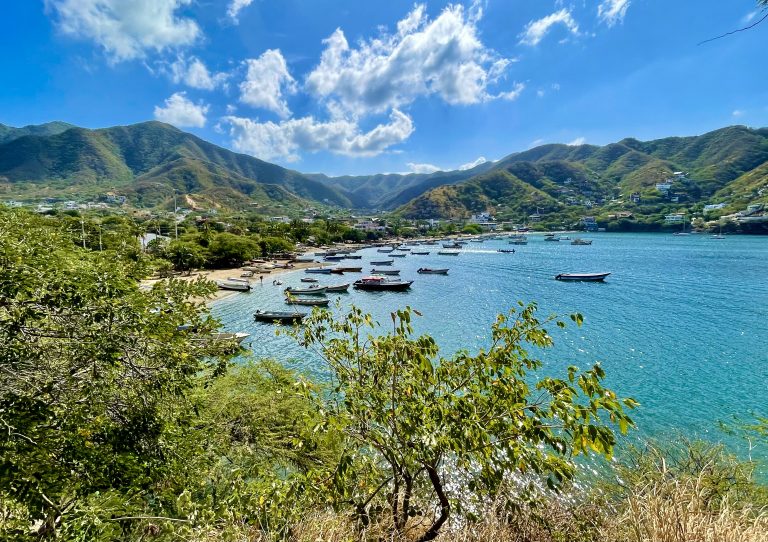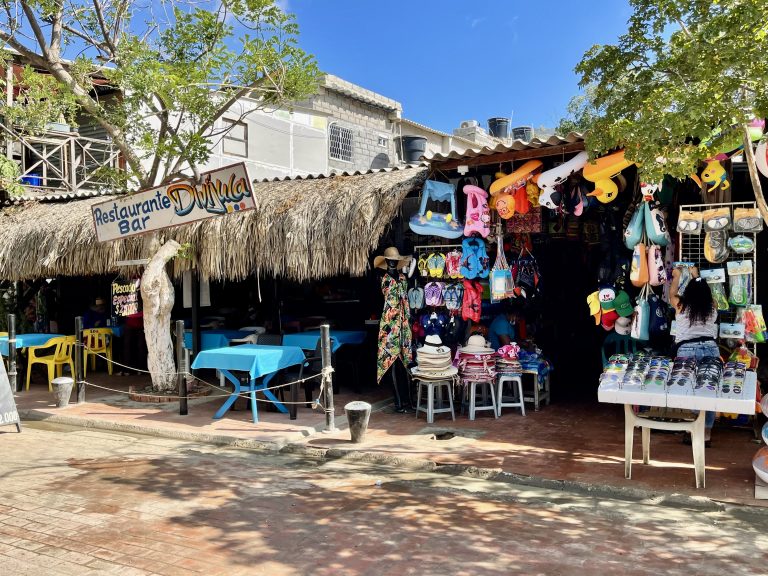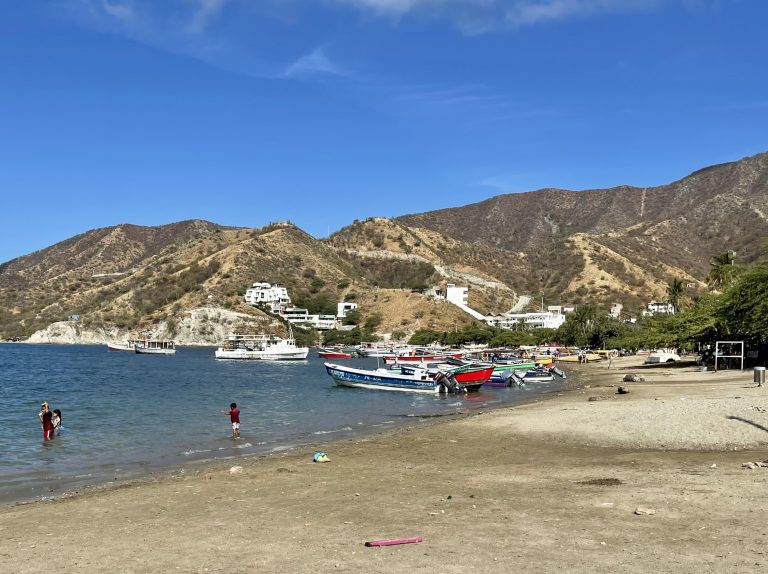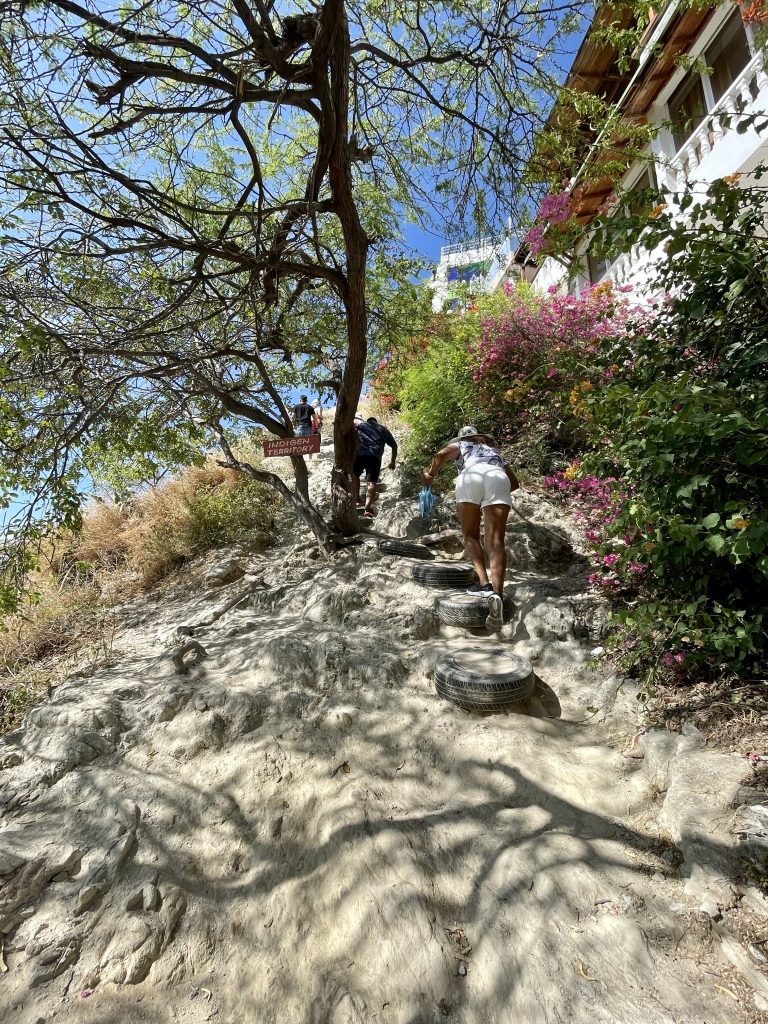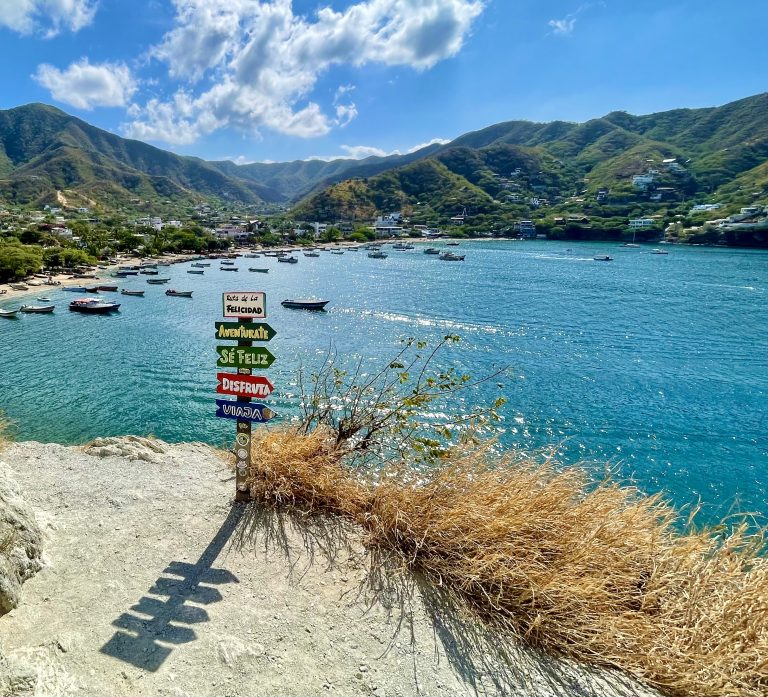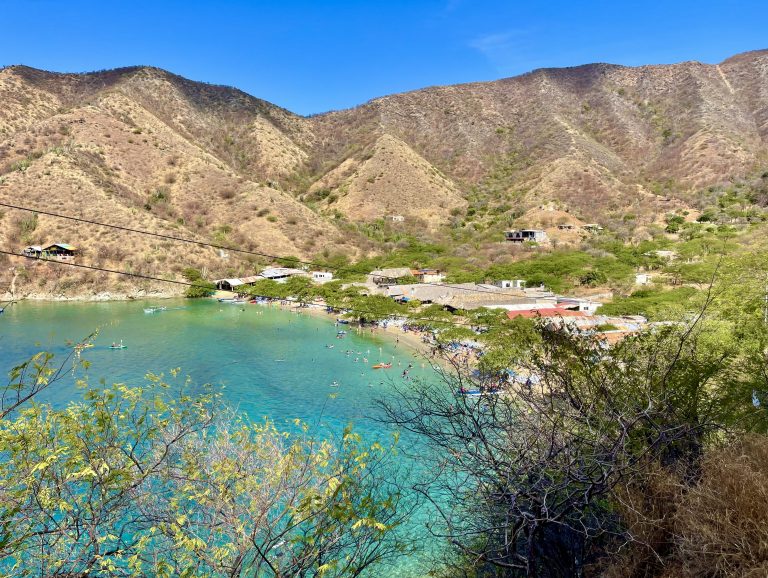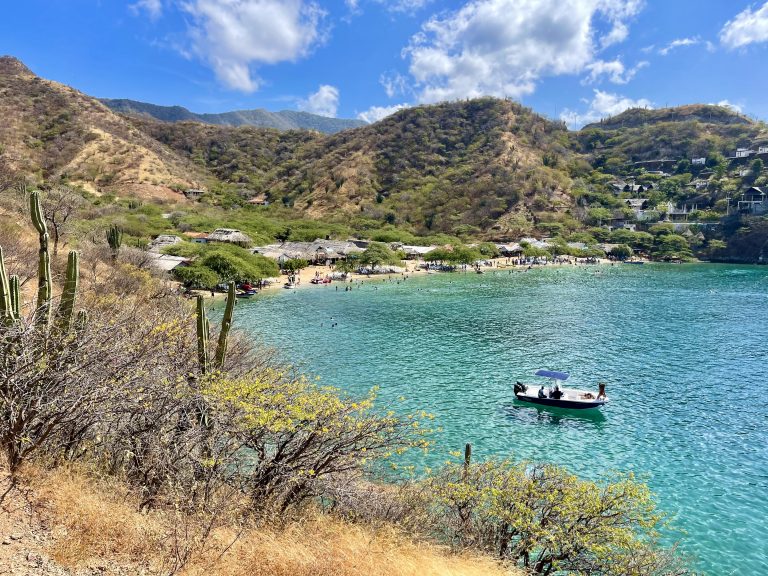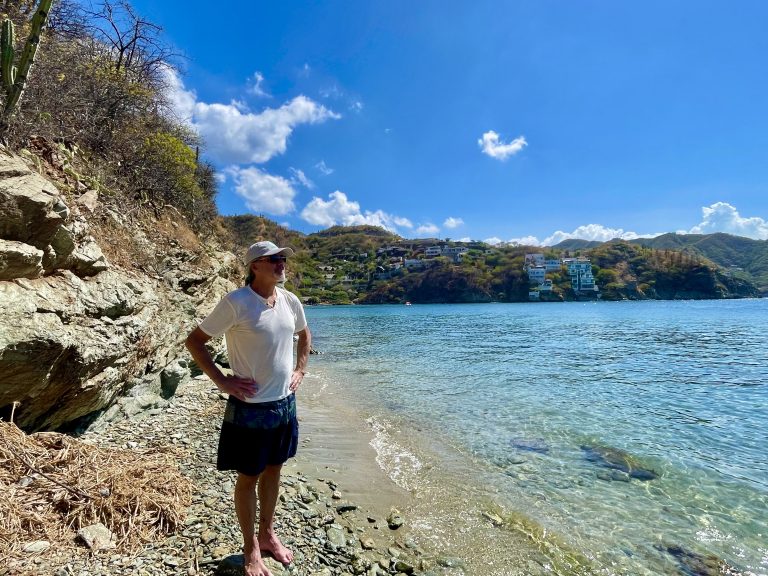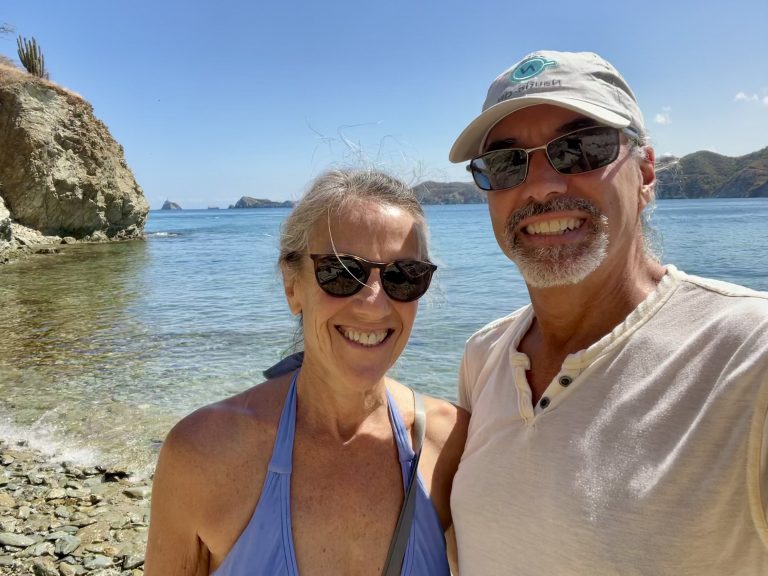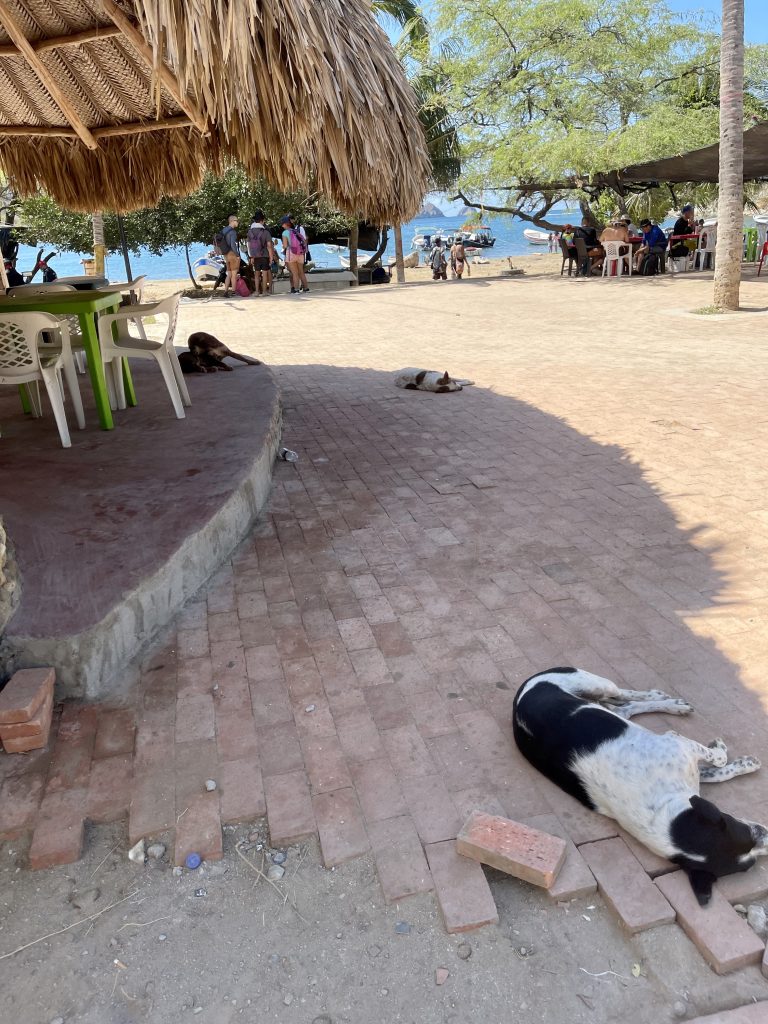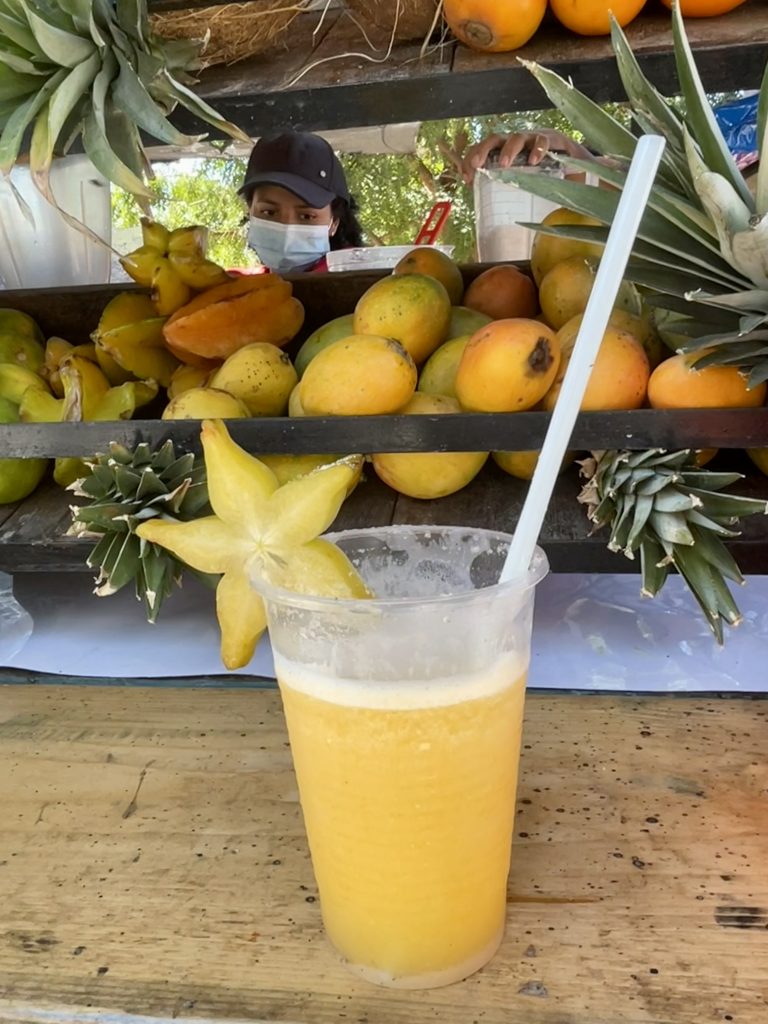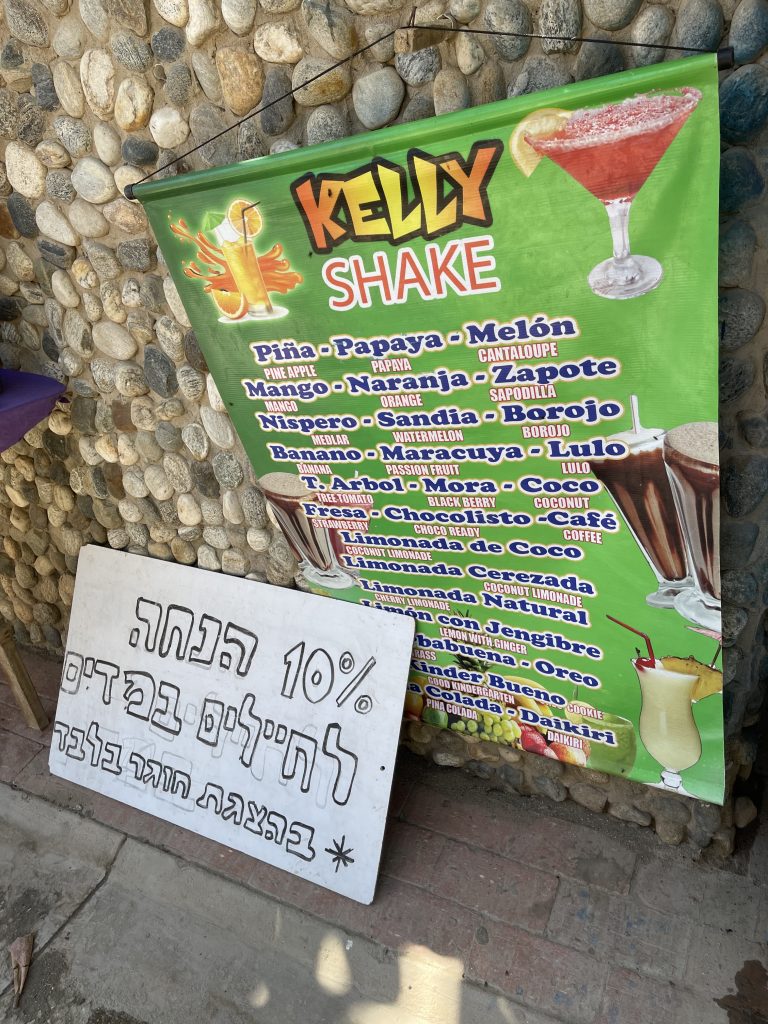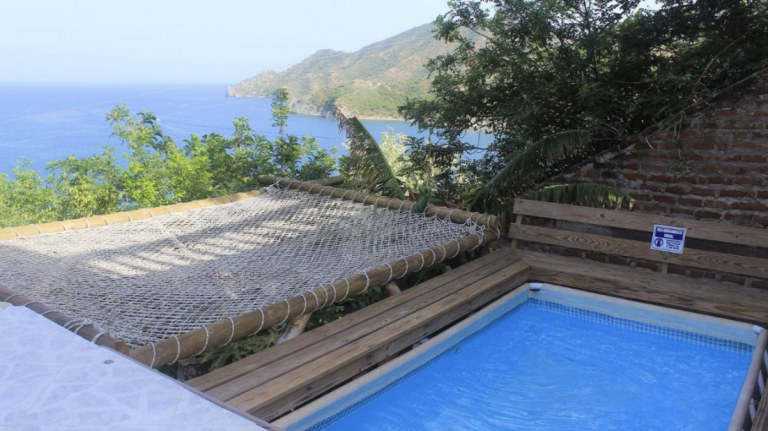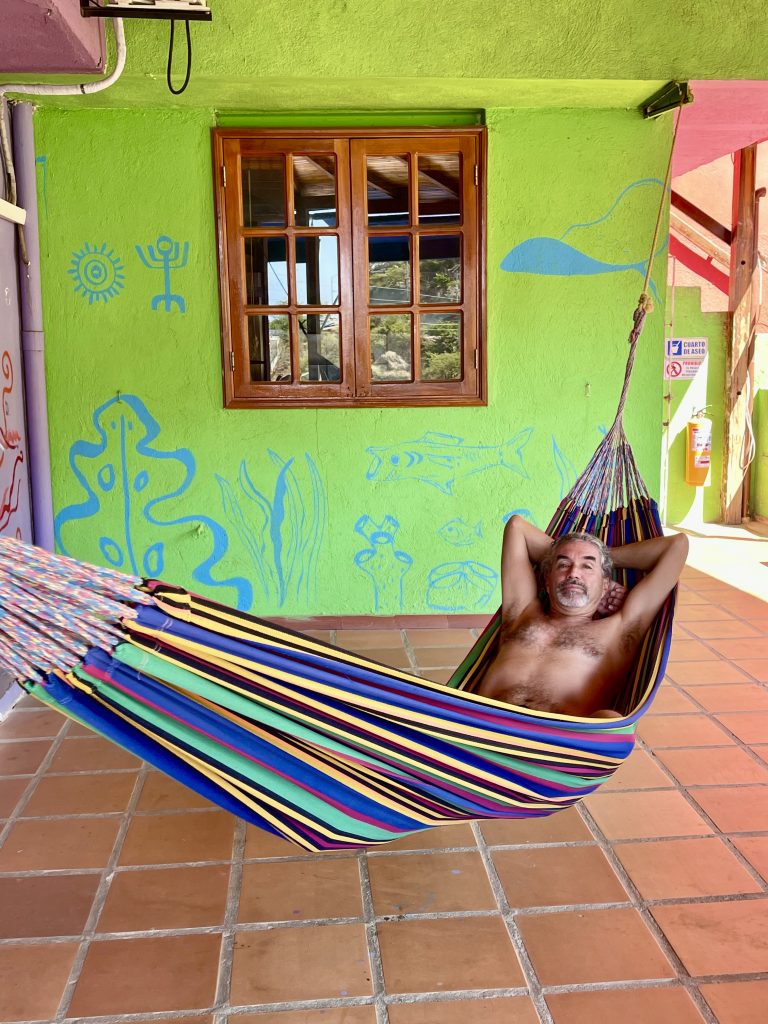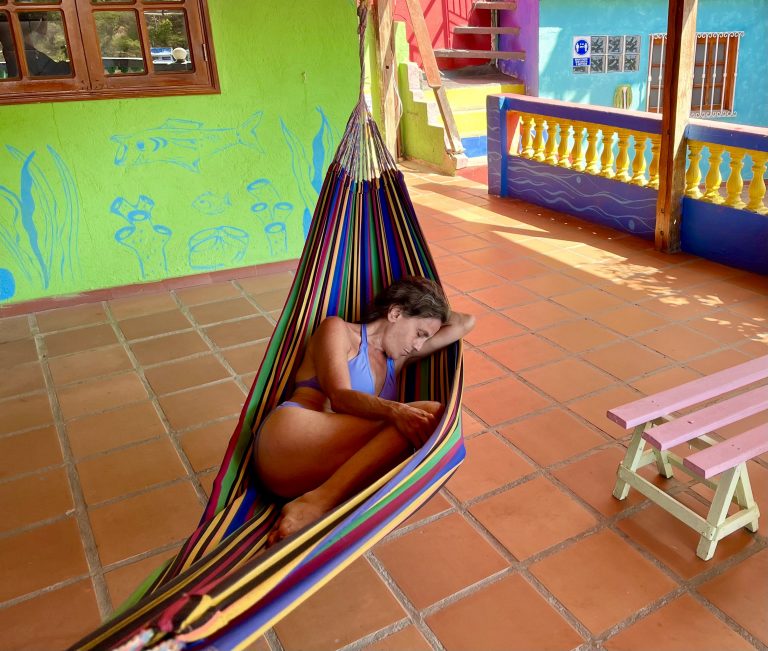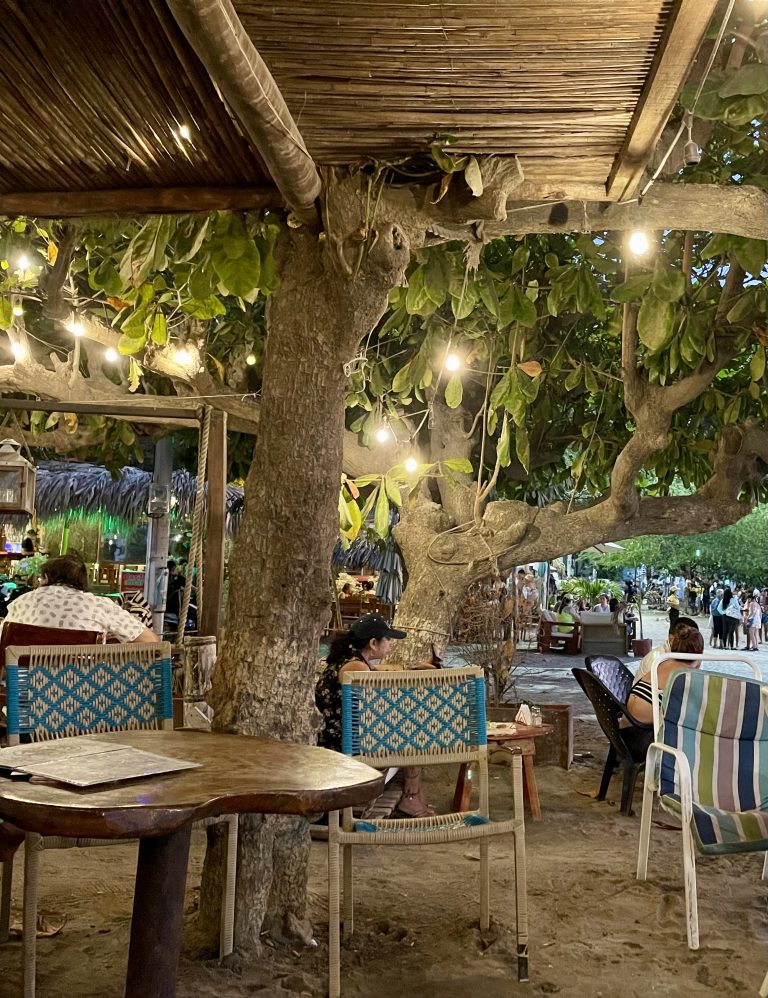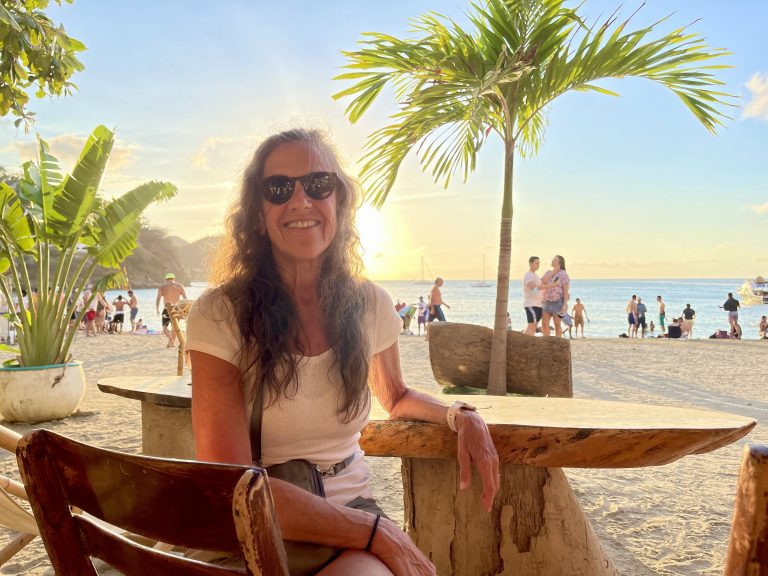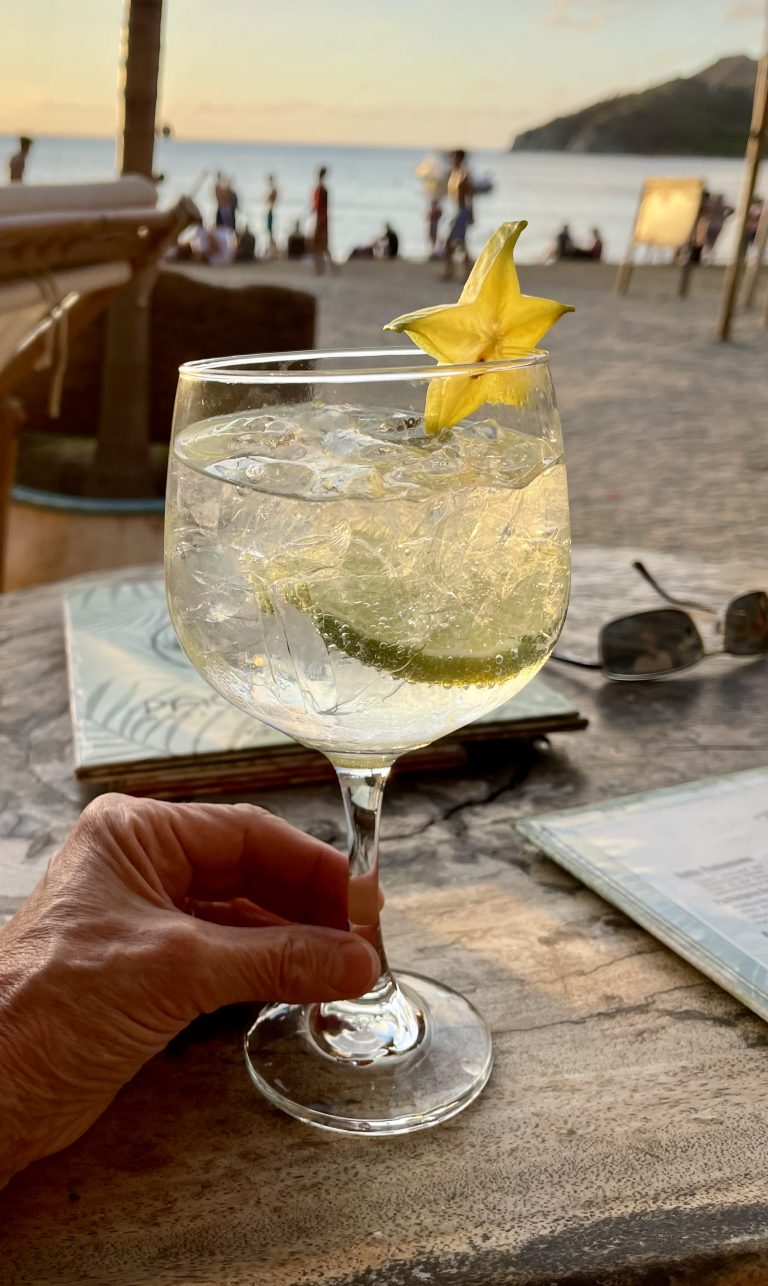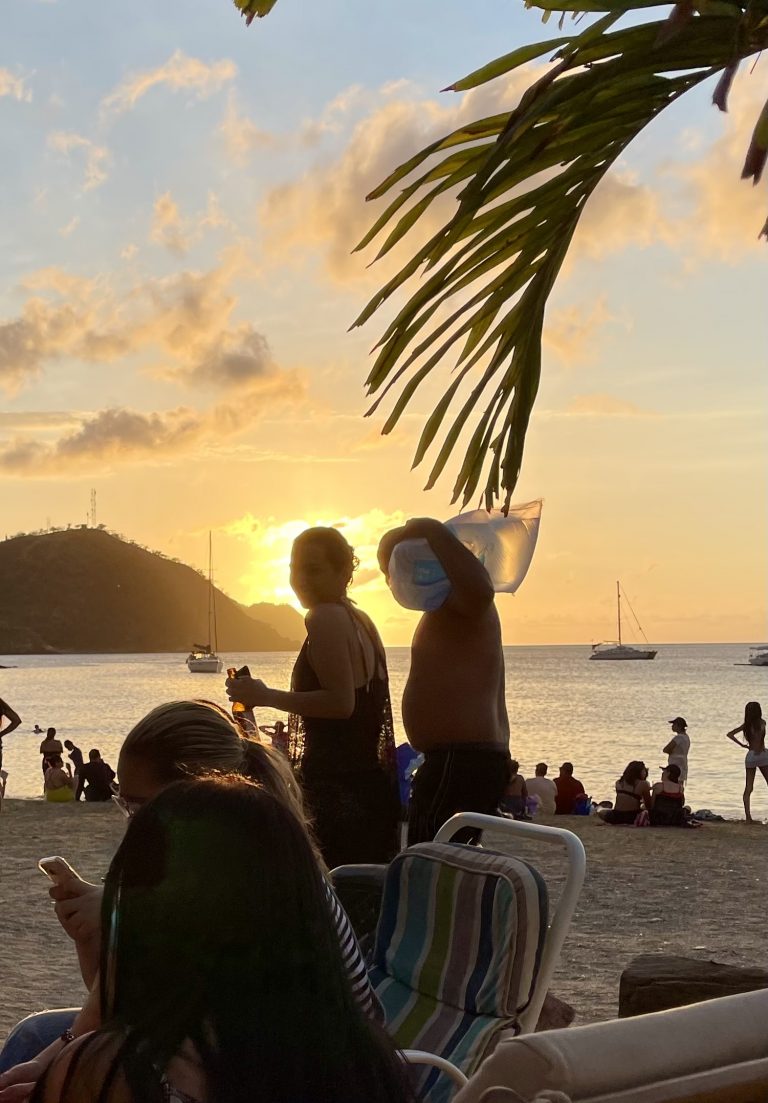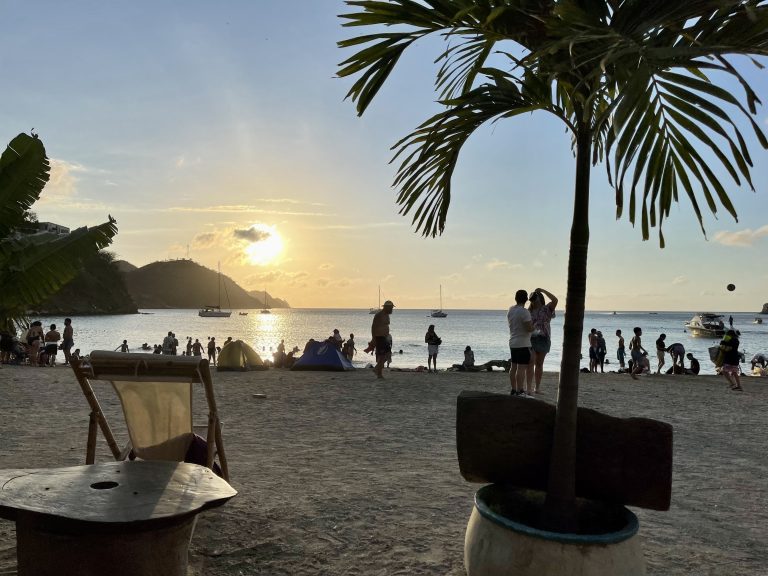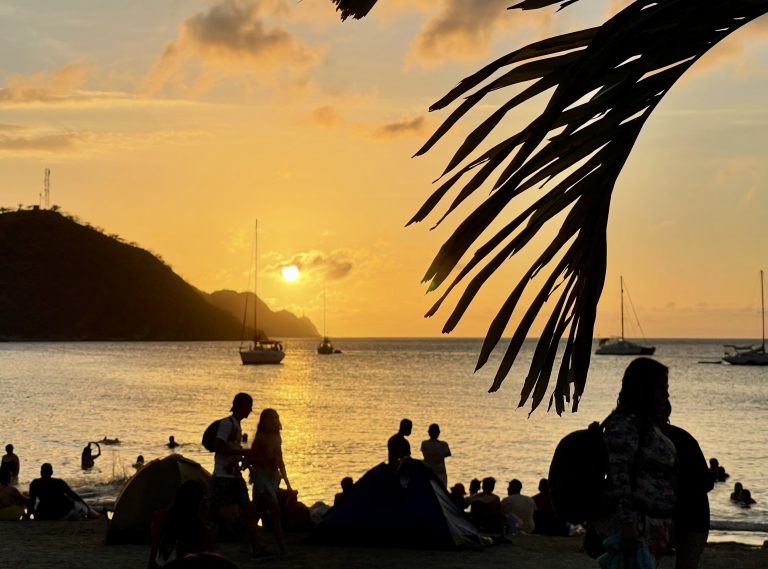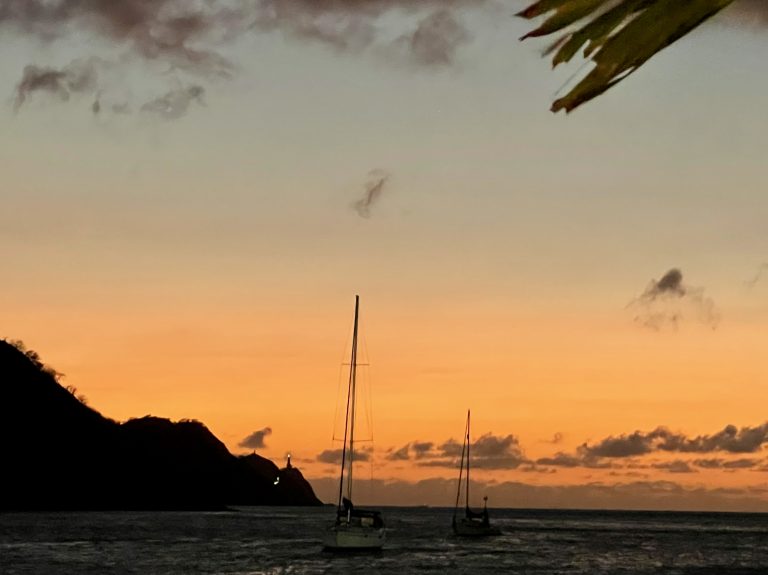January 14, 2022
Quiet and nights seem to be mutually exclusive in this part of Colombia. Music and a constant stream of unmuffled traffic leaving the village of Taganga finally ended late.
After a nice breakfast at the hostel, we walked down to Taganga and past its small beachfront restaurants and tiny shops selling brightly colored trinkets. Taganga was founded in 1525 and, along with nearby Santa Marta, is one of the two oldest remaining colonial settlements in Colombia. The tiny village is less than 1/2 square mile so we made our way through the town in just a few minutes. After passing the boats lined up in the harbor, we found the trail we were seeking that led up to and along the hills surrounding the bay.
We climbed steeply out of the village, heading toward Playa Grande—which, as its name implied, was said to be one of the largest (and nicest) beaches on Colombia’s Caribbean coast.
Sadly, there was a fair amount of trash scattered along the trail and in the cactus-covered hills. We were surprised by the relatively large number of hikers on the trail until we considered that popular Playa Grande was reachable only by water or by hiking the trail from Taganga.
When we reached the first hilltop, we were directed by a sign to Ruta de Felicidad (Path of Happiness), Adventurate (Adventurous), Sé Feliz (Be Happy), Disfruta (Enjoy), Viaja (Travels). They all pointed the same way, so we obviously went in that direction!
The morning sun shimmered on the Caribbean sea and cast shadows on the green hills of the jungle to the south. It was lovely.
We soon reached Playa Grande and were unimpressed. Most of the beach was covered with thatched roof structures where vendors sold food, drinks, and chachkas. Small boats belched their smelly exhaust and, though it was only about 10:00 am, beachgoers blasting boomboxes were staking out the best spots on the surprisingly limited amount of beach. We quickly continued onward.
Farther along the trail, we found a steep side trail that led us down to a tiny, rocky beach hidden from basically everything and we had it all to ourselves. Enjoying the solitude, we relaxed on our little beach and cooled off in the Caribbean.
It was 90 degrees and pretty humid and by the time we hiked back to Taganga I was drenched. Even the (many) dogs that wander through the village couldn’t handle the heat and were stretched out on the concrete in shady areas.
We stopped at a beachside stand selling fresh fruit smoothies made from a variety of both known and unfamiliar tropical fruits. Even after looking up the names of some of the fruits using our various translator apps we still weren’t sure what we ordered. After the face-scrunching taste of one, we heaped sugar into it. Rum might have worked too.
To get back to our hostel, we had to climb steep steps to the road, then walk up the steep road, then walk up the many outside steps to get to our room—an exercise in overheating.
We still had our bathing suits on from our dip in the Caribbean so we jumped into the tiny pool to cool off, then hung out on the giant 12 x12 hammock suspended 15 feet in the air overlooking the sea. Looking down through the mesh, I could see some greenery below that was hiding sharp concrete slabs and rebar. I hoped the mesh wasn’t too old.
Back at our room, the marginal air conditioner suddenly quit. I saw utility trucks on the road below working on the power lines and knew we were in for a few hours of no electricity.
Several hours later, the power was back so we took cool showers and eventually walked back to the village for dinner.
Pachamama was a restaurant recommended to us so we found an outside table under an umbrella a few steps from the surf and had huge US$2.50 happy hour drinks followed by dinner as we watched the locals. It was Friday night and there were hundreds of people on the beach.
With sand under our feet and one of the hundreds of local free-range dogs begging at our table, we watched a spectacular sunset. Pretty perfect.

